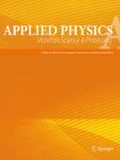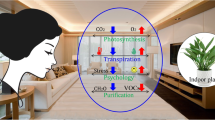Abstract
Conservation of ancient metallic artefact displayed inside museums is a complex problem due to the large number of constraints mainly related to the artefacts fruition by people. The development of a simple procedure for monitoring the artefact conservation state promptly highlighting risky conditions without impacting on the normal museum operations could be of interest in the cultural heritage world. This paper describes the interesting results obtained by using a highly sensitive and innovative methodology for evaluating the safety level of the museum indoor areas, and more specifically of the interior of the showcases, with respect to the metallic artefacts. The methodology is based on the use of an innovative smart sensors network and of copper reference samples. The smart sensors network was employed for the continuous monitoring of temperature and relative humidity close to the artefacts, i.e. inside the display showcases. The reference specimens were Cu coated with a 100 nm Cu nanostructured layer put for 1 year in the exhibition rooms inside and outside the showcases and characterised by means of normal imaging, colorimetric and FESEM techniques at regular intervals. The results of the monitoring activity evidenced the higher reactivity to the environmental aggressivity of the nanocoated copper specimen with respect to bulk artefacts and therefore the possibility to use them as alerts to possible corrosion phenomena that may occur to the real artefacts. A proper temperature and relative humidity monitoring inside the showcases and close to each group of artefacts is a powerful though economic and non-invasive way to highlight most of the possible critical display conditions.











Similar content being viewed by others
References
D. Knotkova, K. Kreislova, B. Kreibichova, I. Kudlacek, in Proceedings of the International Conference on Conservation Strategies for Saving Indoor Metallic Collections, Cairo, Egypt, 2007, pp. 64–71
T. Prosek, M. Kouril, M. Dubus, M. Taube, V. Hubert, B. Scheffel, Y. Degres, M. Jouannic, D. Thierry, Stud. Conserv. 58(2), 117 (2013)
E. Angelini, S. Grassini, D. Mombello, A. Neri, M. Parvis, G. Perrone, Appl. Phys. A 100, 975 (2010)
E. Angelini, S. Grassini, S. Corbellini, M. Parvis, M. Piantanida, Appl. Phys. A 100(3), 763 (2010)
M. Abdelhamid, S. Grassini, E. Angelini, G.M. Ingo, M.A. Harith, Spectrochim Acta Part B At Spectrosc 65, 695 (2010)
Ruth Johnston-Feller ‘Color Science in the Examination of Museum Objects’—The Getty Conservation Institute, j. Paul Getty Trust, 2001. Available at www.getty.edu/conservation/publications…/pdf…/color_science.pdf, last checked 2015-08-18
Standard Practice for Calculation of Color Tolerances and Color Differences from Instrumentally Measured Color Coordinates, ASTM D2244-15e1
J. Winter, C. Maines, J. Dickerson, Application of image processing and analysis in research on works of art, in Imaging the Past Electronic Imaging and Computer Graphics in Museums and archaeology, British Museum Occasional Paper 114, ed. by T. Higgins, P. Main, J. Lang (British Museum Press, London, 1996)
M. Thornbush, H. Viles, Integrated digital photography and image processing for the quantification of colouration on soiled limestone surface in Oxford, England. J Cult Herit, 5 (2004)
Crawford et al. A standardised Remote monitoring photographic capture system (RMPCS) for in situ documentation of corrosion protection system test. in Metals and Museum in the Mediterranean, Protecting, Preserving and Interpreting, TEI of Athens (2008)
M. Antonini, M. Barlaud, P. Mathieu, I. Daubechies, IEEE Trans. Image Process. 1(2), 205–220 (1992)
D.M. Chandler, S.S. Hemami, IEEE Trans. Image Process. 14(4), 397 (2005)
H.G. Senel, IEEE Trans. Image Process. 18(4), 867 (2009)
R.W. Cox, R. Tong, IEEE Trans. Image Process. 8(9), 1297 (1999)
R. Wilson, A.D. Calway, E.R.S. Pearson, IEEE Trans. Inf. Theory 38(2–2), 674 (1992)
S. Corbellini, F. Ferraris, A. Neri, M. Parvis, E. Angelini, S. Grassini, IEEE Trans. Instrum. Meas. 60, 1691 (2011)
E. Angelini, S. Grassini, D. Mombello, A. Neri, M. Parvis, Appl. Phys. A 100, 919 (2010)
National Park Service “Conserve O’ Gram” available at http://www.nps.gov/museum/publications/conserveogram/03-03.pdf, last checked on 2015-08-05
Author information
Authors and Affiliations
Corresponding author
Rights and permissions
About this article
Cite this article
Angelini, E., Civita, F., Corbellini, S. et al. Innovative monitoring campaign of the environmental conditions of the Stibbert museum in Florence. Appl. Phys. A 122, 123 (2016). https://doi.org/10.1007/s00339-016-9635-4
Received:
Accepted:
Published:
DOI: https://doi.org/10.1007/s00339-016-9635-4




